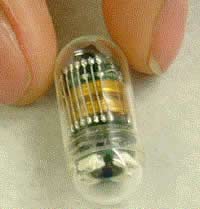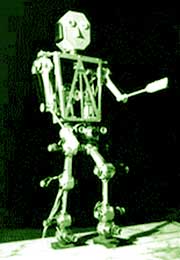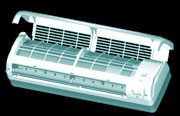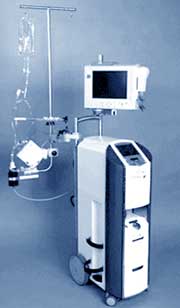Used for various purposes, the unique scientific inventions listed below are contributing to changing our lives.
Traveling Inside the Human Body
 |
PillCam (Photo: elite-med) |
The traditional method of endoscoping internal organs using a camera hidden inside a tube passed through the throat often causes significant pain for patients, and for some organs like the small intestine, this classical method is not feasible. Recently, scientists successfully developed the PillCam – a tiny camera that is only 26 cm long and 11 cm wide. This is the smallest imaging device, consisting of a light bulb and a signal transmission chip. The PillCam not only captures clear images but also has many valuable functions for medical purposes. For example, until now, taking pictures of the small intestine was very difficult because it is approximately 6 meters long and situated between the stomach and the large intestine. With the PillCam, the endoscopy method is now painless, allowing doctors to diagnose conditions quickly and easily.
Firefighting Robot
 |
| (Photo: CAND) |
The Robotics Institute of Jiatong University in Shanghai and the Shanghai Fire Department have collaborated to create a robot for firefighting purposes. Weighing 300 kg, the firefighting robot can move forward and backward in a series of four steps and can turn left and right. It can also step over obstacles and climb stairs.
Equipped with three cameras, this robot can observe conditions on the ground and in the surrounding area, simultaneously sending information back to the operator. The robot is also outfitted with two ultrasonic sensors that are fire-resistant. These sensors help the robot avoid obstacles and navigate to safety. A particularly useful feature for firefighters is that it can detect and identify hazardous substances, oxygen deficiency, and potential explosions.
Air Conditioner that Kills Bird Flu Virus
In early 2006, LG Electronics launched an air conditioner that eliminates H5N1, called the Anti-A.I. Aircon, which has a special filter coated with leuconostoc citreum extract from kimchi. “Tests
 |
(Photo: CAND) |
show that this filter can deactivate up to 99% of H5N1 virus in the air within just 30 minutes,” stated Seo Seok-jang, head of the air conditioning research department at LG Electronics.
In addition to the special filter, the Anti-A.I. Aircon is equipped with effective filter layers that contain natural antibacterial agents extracted from the plant Houttuynia cordata. Notably, the filter layer uses nano-sized silver ions to eliminate dangerous chemical compounds such as formaldehyde and volatile organic compounds (VOCs). Additionally, it features a Plasma filter that uses high voltage to completely remove ultra-fine particulates in the air. At room temperature, the H5N1 virus can survive for up to 14 days in the air or in minute dust particles.
Smallest Artificial Heart-Lung Machine in the World
Measuring 20×30 cm
 |
| (Photo: CAND) |
, the MECC (Minimal Extracorporeal Circulation) is a successful invention by a group of engineers and doctors from the Regensburg University Hospital. The MECC can save victims as soon as they are transported to a helicopter for transfer to the hospital. Mathias Arlt from Regensburg University stated, “Typically, artificial heart-lung machines are about 1.5 meters tall and weigh around 200 kg. While these machines are very effective in rescuing patients whose hearts and lungs have stopped functioning, they are too bulky for convenient transport during emergency flights. In contrast, our MECC weighs about 10 kg, making it very convenient for rescue personnel to carry while executing rescue operations… Recently, the MECC demonstrated its effectiveness in the case of a female patient suffering from a brain hemorrhage, who had to be urgently transferred by helicopter from a small clinic to Regensburg University Hospital for treatment. Without immediate transfer, her condition would have been critical, and even without the support of the MECC and if transported by a conventional ambulance, it would have been too late. Currently, the patient is recuperating at home and is on the path to recovery…”.
The MECC is currently only used in Regensburg for bypass surgery cases, and experts reveal that another advantage of the MECC is that it requires less blood to be transfused to patients and reduces postoperative complications compared to other artificial heart-lung machines.
Dan Ko




















































